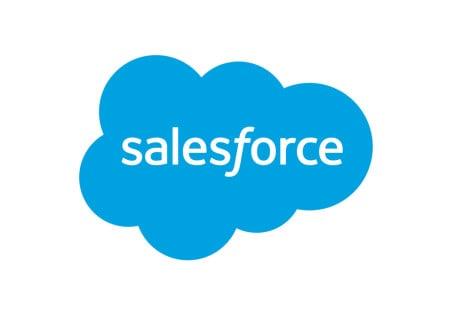Salesforce Nonprofit Cloud has undeniably revolutionized the way nonprofit organizations in the United States operate. It has provided a powerful and integrated platform for managing fundraising, constituent relationships, program delivery, and impact measurement, becoming a cornerstone of the sector's technological infrastructure. However, the landscape of technology is ever-evolving, and while Salesforce remains a dominant force, it's crucial to explore what the future holds for nonprofit cloud technology beyond its current offerings. What are the emerging trends, innovative solutions, and unmet needs that will shape the next generation of tools empowering mission-driven organizations?
The future of nonprofit cloud technology will likely be characterized by increased specialization, greater emphasis on data analytics and artificial intelligence, enhanced collaboration and integration, and a deeper focus on user experience and accessibility. While Salesforce continues to innovate and expand its platform, the sector is ripe for complementary solutions and potentially disruptive technologies that address evolving needs and leverage cutting-edge advancements.
The Rise of Specialized and Niche Platforms:
While Salesforce offers a comprehensive suite of features, the "one-size-fits-all" approach may not perfectly cater to the unique requirements of every type of nonprofit. The future could see the emergence and growth of more specialized cloud platforms tailored to specific mission areas or organizational sizes.
- Mission-Specific Solutions: Imagine cloud platforms deeply integrated with the specific workflows of environmental conservation organizations (e.g., tracking biodiversity data, managing land conservation easements), arts and culture nonprofits (e.g., ticketing and membership management, grant reporting for arts councils), or healthcare-focused charities (e.g., patient management, appointment scheduling, health data analytics). These niche platforms could offer deeper functionality and more intuitive interfaces designed for particular organizational needs.
- Solutions for Small and Medium-Sized Nonprofits (SMBs): While Salesforce offers solutions for organizations of all sizes, its complexity and cost can be a barrier for smaller nonprofits with limited resources. The future might see the rise of more affordable and streamlined cloud platforms specifically designed for SMBs, offering core CRM, fundraising, and communication features without the extensive customization options of larger platforms. These could focus on ease of use and rapid implementation.
The Power of Data Analytics and Artificial Intelligence (AI):
Data is the lifeblood of effective nonprofit work, and the future of cloud technology will undoubtedly see a greater emphasis on leveraging data analytics and AI to drive insights and improve outcomes.
- Predictive Analytics for Fundraising: AI-powered tools could analyze donor behavior patterns to predict future giving, identify potential major donors, and personalize fundraising appeals for maximum impact. Imagine a system that flags donors who are likely to lapse or suggests optimal timing and messaging for renewal campaigns.
- AI for Program Optimization: AI could be used to analyze program data, identify trends, and optimize service delivery. For example, in an education nonprofit, AI could analyze student performance data to identify at-risk individuals and suggest targeted interventions.
- Enhanced Reporting and Visualization: Future platforms will likely offer more sophisticated and user-friendly reporting and data visualization tools, enabling nonprofits to easily track progress towards their goals, demonstrate impact to stakeholders, and communicate their story more effectively.
- AI-Powered Automation: AI can automate repetitive tasks, such as data entry, email marketing, and basic customer service inquiries, freeing up nonprofit staff to focus on more strategic and mission-critical activities.
The Importance of Integration and Collaboration:
Nonprofits often rely on a variety of tools and platforms for different aspects of their work. The future of cloud technology will likely see a greater emphasis on seamless integration and enhanced collaboration capabilities.
- Open APIs and Interoperability: Platforms will need to offer robust APIs (Application Programming Interfaces) that allow them to easily connect and share data with other essential nonprofit tools, such as accounting software, email marketing platforms, and volunteer management systems.
- Collaborative Workspaces: Cloud platforms could evolve to offer more integrated collaborative workspaces, allowing different teams within a nonprofit to work together more effectively on projects, share information seamlessly, and track progress in a unified environment.
- Cross-Sector Collaboration: The future might also see cloud platforms facilitating collaboration between different nonprofit organizations working on similar issues, enabling them to share best practices, pool resources, and amplify their collective impact.
Focusing on User Experience and Accessibility:
Technology should empower, not hinder, the work of nonprofit professionals. The future of nonprofit cloud technology will likely place a greater emphasis on intuitive user interfaces, improved accessibility, and a more human-centered design approach.
- User-Friendly Interfaces: Platforms will need to be designed with the end-user in mind, offering clear navigation, intuitive workflows, and customizable dashboards that make it easy for staff with varying levels of technical expertise to utilize the system effectively.
- Enhanced Accessibility: Ensuring that cloud platforms are accessible to individuals with disabilities will be a critical focus. This includes features like screen reader compatibility, keyboard navigation, and adherence to accessibility standards.
- Mobile-First Design: With the increasing prevalence of mobile devices, future nonprofit cloud platforms will need to offer seamless mobile experiences, allowing staff and volunteers to access information and perform tasks on the go.
Emerging Technologies and Disruptive Innovations:
Beyond incremental improvements to existing platforms, the future could see the adoption of emerging technologies that fundamentally reshape nonprofit operations.
- Blockchain for Transparency and Trust: Blockchain technology could be used to enhance transparency in fundraising and grantmaking, track the flow of funds, and build greater trust with donors and stakeholders.
- Decentralized Autonomous Organizations (DAOs) for Collective Impact: While still in their early stages, DAOs could offer new models for collective action and resource allocation within the nonprofit sector, empowering communities to directly participate in decision-making.
- Virtual and Augmented Reality (VR/AR) for Engagement and Education: VR and AR could be used to create immersive experiences for donors and beneficiaries, bringing their mission to life in new and impactful ways. Imagine a virtual tour of a conservation project or an augmented reality experience showcasing the impact of a donation.
The Role of Open-Source Solutions:
The open-source movement has gained significant traction in the technology world, offering flexible, customizable, and often more affordable alternatives to proprietary software. The future could see a greater adoption of open-source cloud solutions within the nonprofit sector, empowering organizations with greater control over their technology and fostering community-driven innovation.
Conclusion:
While Salesforce Nonprofit Cloud has established itself as a leading platform, the future of nonprofit technology in the US extends far beyond its current capabilities. The next generation of tools will likely be characterized by greater specialization, the pervasive integration of data analytics and AI, enhanced collaboration and interoperability, and a deep commitment to user experience and accessibility. Emerging technologies and the growth of open-source solutions also hold the potential to disrupt the landscape and offer new possibilities for mission-driven organizations.
As the needs of the nonprofit sector continue to evolve, so too will the technology that supports it. The future of nonprofit cloud technology is not about replacing existing solutions entirely, but rather about building upon them, innovating in new directions, and ultimately empowering nonprofits with the most effective and user-friendly tools to scale their impact and create a better world. The journey beyond the current cloud giant promises a more diverse, intelligent, and ultimately more impactful technological future for the nonprofit sector.






Comments